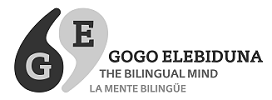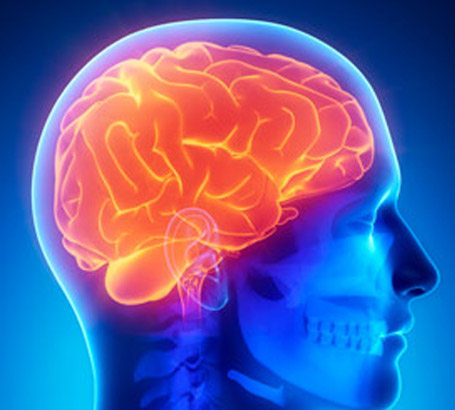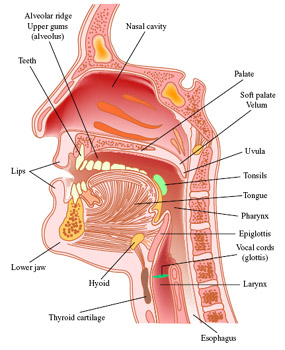Phonology and the brain: it’s all in the features.

…and the vision that was planted in my brain still remains,
within the sound of silence.
(Simon and Garfunkel, The sound of silence 1964)

Sound is made of waves. One fundamental trick of speech is that it surfs those waves by slicing them up into discrete bits. Recently, Mesgarani et al. (2014)1 (see also 2) have shown how our brains respond to speech in this cut up fashion, attending to the very features that linguists uncovered after decades of research, in their efforts to make sense of the sound systems of human languages in a branch of Linguistics known as Phonology. This is a beautiful example of convergence between Linguistics and Neuroscience, reminding us (once again) that Knowledge is one, regardless of disciplinary borders and research styles.
Speech is the messenger of language, carrying thoughts in and out our minds. It is typically made of sound, but it need not to: in sign languages, speech is silent, made of movements in space3. Like everything else in language, speech appears easy, simple and quick to us, the ultimate language machines. But as soon as we look into how it is encoded and decoded in our minds, we find a finely structured system that combines a finite set of features to yield all possible sounds (a.k.a. phonemes) of all possible languages. In the history of Linguistics, a nameless and vague concept of phoneme was at play long before the name and a more precise characterization were developed in the first half of the twentieth century.
 The history of phonemes goes back at least 2.400 years, to the Ashtadhyayi 4, the rigorous and exhaustive Sanskrit grammar composed by Pāṇini in the Vedic Period. Early European grammarians were not aware of phonemes, with the only exception of one anonymous Icelandic monk known as the first grammarian who had the insight in the 12th century, while describing the Icelandic language in the Fyrsta Málfræðiritgerðin 5. Unfortunately, this isolated discovery remained unnoticed, and Western thought had to wait until scholars like Sir William Jones could read Pāṇini’s work, and be able to hypothesize that Sanskrit and other European languages were descendants of a common mother tongue, the Proto-Indo-European6.
The history of phonemes goes back at least 2.400 years, to the Ashtadhyayi 4, the rigorous and exhaustive Sanskrit grammar composed by Pāṇini in the Vedic Period. Early European grammarians were not aware of phonemes, with the only exception of one anonymous Icelandic monk known as the first grammarian who had the insight in the 12th century, while describing the Icelandic language in the Fyrsta Málfræðiritgerðin 5. Unfortunately, this isolated discovery remained unnoticed, and Western thought had to wait until scholars like Sir William Jones could read Pāṇini’s work, and be able to hypothesize that Sanskrit and other European languages were descendants of a common mother tongue, the Proto-Indo-European6.
Even though the name and a precise characterization of phonemes were to come later, phonemes were right there at the birth of Linguistics: nineteenth century scholars were amazed to discover that sound change in language was systematic. This meant that it could be captured by laws. One famous example is Grimm’s Law7: it describes how stop consonants of Proto-Indo-European changed in Proto-Germanic, and it presents regular correspondences between those sounds in Germanic and in other Indo-European languages. Linguistics could finally make hypotheses and predictions, and although still in disguise, phonemes were at the heart of it all. After years of rigorous and extensive language research Baudouin de Courtenay famously characterized the phoneme as “the psychological equivalent of a speech sound” in 18958.
Fast forward into twentieth century Prague where a group of linguists and literary critics known as the Prague Linguistic Circle made very important discoveries about language, and about the nature and structure of phonemes. During the 1930s, Nikolai Trubetzkoy and Roman Jakobson discovered that phonemes are best characterized not as minimal units of language, but in terms of combinations of smaller distinctive features. These features can refer to the place where the airflow is compressed in the oral cavity, the way in which this airflow is released, and whether or not the vocal cords vibrate, for instance. Second World War put an end to the Circle of Prague; Nikolai Trubetzkoy died in 1938 from a heart attack attributed to Nazi persecution after he denounced Hitler‘s theories, and Roman Jakobson finally fled to the US in 1941. There he met American linguists like Leonard Bloomfield or Morris Hale and Noam Chomsky, with whom he collaborated at MIT as honorary Professor Emeritus at the end of his career in the sixties 9.
 Let us bring in an example. Enter Alice and the Chesire Cat: “Did you say pig or fig?” said the Cat. “I said pig” replied Alice10. In English, /p/ and /f/ are phonemes because substituting one for the other creates two distinct words, with distinct meanings. Moreover, /p/ and /f/ differ in one dimension: the first phoneme is called a stop because the airflow is interrupted by closing the lips, whereas the second one is a fricative thatforces the airflow through a narrow channel made by placing the lower lip against the upper teeth. Distinctive features such as [+/-stop] or [+/-fricative ] characterize entire classes of phonemes that share the same value for a given feature. For instance, the class of stops contains all phonemes where the vocal tract is blocked so that all airflow ceases, which in English are /p/, /t/, /k/ and /b/, /d/, /g/. Moreover, another distinctive feature underlies the distinction between /p/, /t/, /k/ on the one hand and /b/, /d/, /g/ on the other: in the second group the vocal chords must vibrate, whereas they must not do so in the first. That is, /p/, /t/ and /k/ are [-voiced] whereas /b/, /d/ and /g/ are [+voiced], as you can see it for yourself if you put your hand on your throat as you make the sounds11.
Let us bring in an example. Enter Alice and the Chesire Cat: “Did you say pig or fig?” said the Cat. “I said pig” replied Alice10. In English, /p/ and /f/ are phonemes because substituting one for the other creates two distinct words, with distinct meanings. Moreover, /p/ and /f/ differ in one dimension: the first phoneme is called a stop because the airflow is interrupted by closing the lips, whereas the second one is a fricative thatforces the airflow through a narrow channel made by placing the lower lip against the upper teeth. Distinctive features such as [+/-stop] or [+/-fricative ] characterize entire classes of phonemes that share the same value for a given feature. For instance, the class of stops contains all phonemes where the vocal tract is blocked so that all airflow ceases, which in English are /p/, /t/, /k/ and /b/, /d/, /g/. Moreover, another distinctive feature underlies the distinction between /p/, /t/, /k/ on the one hand and /b/, /d/, /g/ on the other: in the second group the vocal chords must vibrate, whereas they must not do so in the first. That is, /p/, /t/ and /k/ are [-voiced] whereas /b/, /d/ and /g/ are [+voiced], as you can see it for yourself if you put your hand on your throat as you make the sounds11.
Mesgarani et al. (2014) recorded direct cortical activity from six participants while they listened to natural speech samples containing 500 English sentences spoken by 400 different people. They found that electrodes were sensitive to the distinctive features that make phonemes. For example, one electrode showed large evoked responses to phonemes /p/, /t/, /k/, /b/, /d/ and /g/; these phonemes are stops, they all involve a block in the vocal tract that ceases airflow. Another electrode was sensitive to sibilants (/s/, /ʃ/, /z/), made by directing a stream of air with the tongue towards the sharp edge of the teeth, which are held close together. Importantly, most electrodes are selective to classes of phonemes that share a feature, not to individual phonemes. Among the electrodes that evoked a response to stops, some were responsive to all stops, but others were selective to the place in the vocal tract where the block of airflow happens: at the back of the mouth (/g/, /k/), in the middle (/d/, /t/), or with the lips (/p/, /b/). Mesgarani et al. (2014) show that phonemic sensitivity is organized primarily by manner, and secondarily by place of articulation, thus converging with the hierarchy of distinctive features put forth by Roman Jakobson in the early forties, to explain the acquisition of phonemes in children and their loss in aphasia12.
Linguists of the first half of the twentieth century often debated on the “reality” of phonemes and distinctive features. By the 1930s there was general agreement that phonemes and features were necessary for phonological description, but there were disagreements as to their nature. Leonard Bloomfield argued that phonemes and features, like the entirety of language in his view, were acoustic categories, external to the mind/brain. From this perspective, the hard problem was to find acoustic invariances across voices and pronunciation events, some acoustic property common to all instances of the sound /p/ in all instances where the word /pig/ is uttered. This might strike you as an easy problem, but in Bloomfield’s words “The Phonetician finds that no two utterances are exactly alike”13. Put differently, outside of our knowledge of language, how can it be determined that two sounds are “the same” or “different”? Here is Bloomfield’s proposal:
“To recognize the distinctive features of a language, we must leave the ground of pure phonetics and act as though science had progressed far enough to identify all the situations and responses that make up the meaning of speech-forms.”14
To this day, science has not progressed in that direction, but rather in the mentalistic one that Bloomfield, under the shade of behaviorism, totally abhorred, because he could not conceive of a scientific theory of the mind:
“The mentalistic theory, which is by far the older, and still prevails both in the popular view and among men of science, supposes that the variability of human conduct is due to the interference of some non-physical factor, a spirit or will or mind (Greek psyche, hence the term psychology) that is present in every human being.”15
Freeman Twaddell16 agreed with Bloomfield that “mentalistic” notions had no place in science, but he knew there was no way of overcoming the impossibility of an acoustic characterization of phonemes and features. Consequently, he rejected the idea that phonemes and features belonged to reality, and viewed them as fictitious entities, though extremely useful for linguistic description.
In contrast, most European linguists, like Nikolai Trubetzkoy, thought of phonemes, features and linguistic categories in general as mental entities. This view connected naturally with the concept of language as part of psychology that challenged behaviorism, advocated by Noam Chomsky within generative linguistics since the 1960s17. As Mesgrani et al (2014) have revealed, phonemes happen to be mental categories, and distinctive features are the way in which our brain represents them.
References
- Mesgarani N., Cheung C., Johnson K. & Chang E.F. (2014). Phonetic Feature Encoding in Human Superior Temporal Gyrus, Science, 343 (6174) 1006-1010. DOI: 10.1126/science.1245994 ↩
- Yosef Grodzinsky and Israel Nelken. 2014 The Neural Code that makes us Human. Science 343, 978-79. ↩
- Hulst, Harry van der. 1993. Units in the analysis of signs. Phonology 10, 209–241. Perlmutter, D. 1992. Sonority and syllable structure in American Sign Language. Linguistic Inquiry 23, 407-442. ↩
- S.C. Vasu (Tr.) 1996. The Ashtadhyayi of Panini (2 Vols.). Vedic Books. ISBN 9788120804098. Reprint of the original translation of 1891. ↩
- Haugen, Einar. 1972. First Grammatical Treatise. The earliest germanic phonology. London: Longman. Second, revised edition. ↩
- Jones, Sir William .1824. Discourses delivered before the Asiatic Society: and miscellaneous papers, on the religion, poetry, literature, etc., of the nations of India. Printed for C. S. Arnold. ↩
- Campbell, Lyle (2004). Historical linguistics (2nd ed.). Cambridge: MIT Press. ↩
- Baudouin de Courtenay, Jan. 1972 An attempt at a theory of phonetic alternations. In Edward Stankiewicz (ed. and trans.) A Baudouin de Courtenay Anthology: The beginnings of structural linguistics, 144-212. Bloomington: Indiana University Press. First published in 1895. ↩
- Roman Jakobson; Morris Halle. 1956. Fundamentals of Language. Berlin-New York: Mouton de Gruyter ↩
- Lewis Carroll, Alice’s Adventures in Wonderland, chapter VI. ↩
- For further Reading on phonemes, distinctive features and phonology see: Marc van Oostendorp; Colin J. Ewen; Elizabeth V. Hume; Keren Rice (Eds).2011. The Blackwell Companion to Phonology, 5 Volumes, Oxford: Blackwell Publishing Ltd. Especially: Chapter 11: “The Phoneme” by Elan Dresher pp. 241-266, and Chapter 17: “Distinctive Features”, by Jeff Mielke pp. 391-415. ↩
- Jakobson, R. (1941) Kindersprache, Aphasie, une allgemeine Lautgesetze. Uppsala: Almqvist & Wiksell. Translated by A.R. Keiler (1968) Child language, aphasia, and phonological universals. The Hague: Mouton. ↩
- Leonard Bloomfield. 1933. Language. Chicago: The University of Chicago Press, page 76. ↩
- Ibid. Page 78. ↩
- Ibid, page 32. ↩
- Freeman w. Twaddell. 1935. On defining the phoneme. Baltimore. ↩
- Chomsky, Noam. 1959.A Review of B. F. Skinner’s Verbal Behavior. Language, 35, No. 1, 26-58. ↩
9 comments
Very interesting post! I would just add that the cortical region where Mesgarani and colleagues found such an articulation-based clustering is an auditory cortex. Thus, speech is represented in auditory cortex not on the basis of sound frequencies (as the majority of people would expect) but rather on the basis of place/dynamics of articulation. This agrees with sensorimotor theories of speech perception, firstly postulated by Alvin Liberman in the 60s and then confirmed by several neurophysiological studies later on.
Absolutely, thank you for this comment, I totally agree. In fact, I intend to devote a future post to this crucial and fascinating question, which has many non trivial consequences for our understanding of the ultimate nature of phonology (and beyond).Thanks again, LF!
[…] Urteak ikertzen eman ondoren fonologoek antzeman zuten gizakiok nola sortzen eta erabiltzen dugun soinu-sistema hainbat hizkuntzetan. Garunak hizkuntzari erantzuten dio fonologoek antzeman zuten ezaugarri horiei jarraituz. Honen harira, hizkuntzalaritza eta neurozientzien arteko konbergentziaren adibide polita dakarkigu Itziar Lakak Phonology […]
[…] Nuestros encéfalos responden al lenguaje según las mismas características que los fonólogos descubrieron tras décadas de investigación sobre cómo los humanos producimos y usamos los sistemas sonoros en las distintas lenguas. Un precioso ejemplo de convergencia entre lingüística y […]
[…] Phonology and the brain: it’s all in the features. […]
[…] Phonology and the brain: it’s all in the features. […]
[…] Artículo original publicado por Itziar Laka en Mapping Ignorance […]
Hi There,
Can you please translate some jargon for the lay-person?
In the sentence ““Mesgarani et al. (2014) show that phonemic sensitivity is organized primarily by manner, and secondarily by place of articulation” what does
1. Manner
2. Phonemic Sensitivity
3. Place of Articulation
refer to?
I have gleaned that 3. refers to ‘a map in the brain that corresponds to the bits of vocal chords and mouth that makes the sounds’. I have no idea from your article what ‘manner’ refers to. I am hazarding a guess that ‘phonemic sensitivity’ has something to do with ‘the brain was more likely to respond to that sound more strongly than say to another sound’ but I am not sure.
This is the irony of linguistics. It looks like English, but I could swear it was another language.
Many thanks
[…] process of speech perception, which you are invited to pursue further in this article and that one. Several surprising facts will turn up. For one thing, we have learned to categorize each speech […]